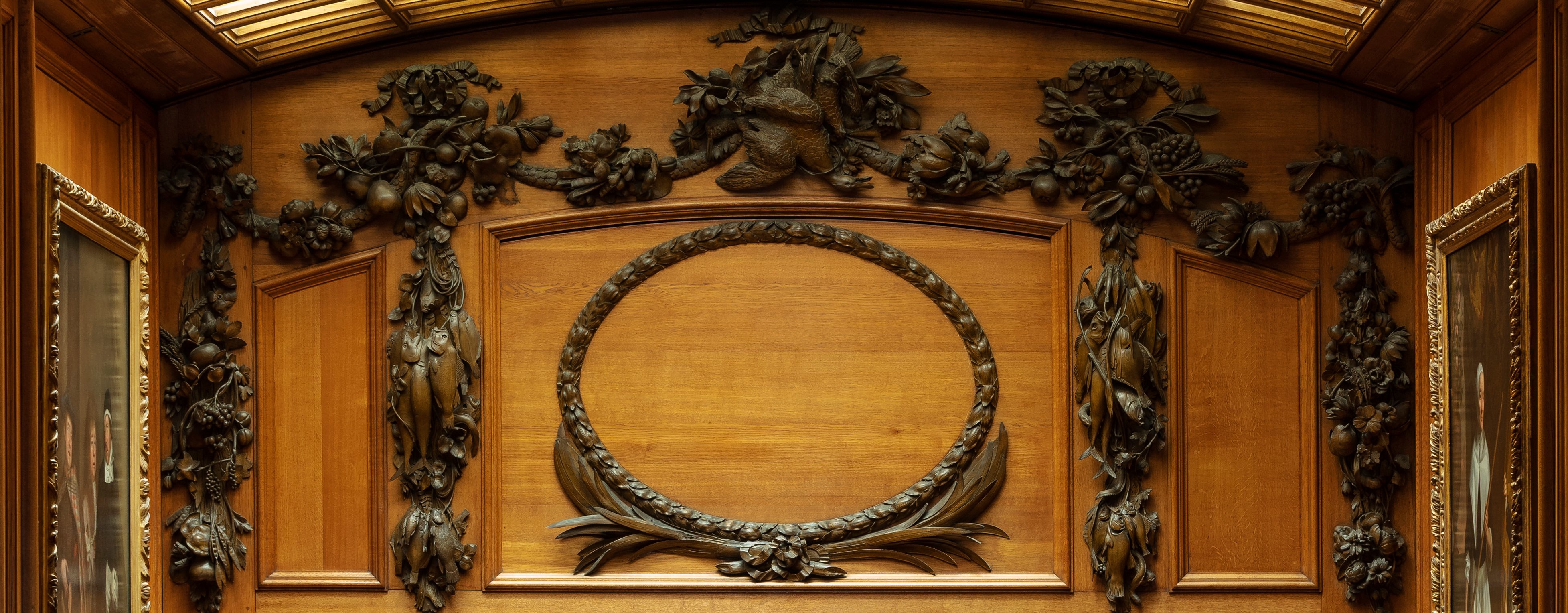Grinling Gibbons
Royal Master Carver

The renowned carver and sculptor Grinling Gibbons worked extensively for successive English monarchs, in the late seventeenth and early eighteenth centuries, being appointed Master Carver to William III in 1693. He was born in Rotterdam in 1648, the son of English parents, and received his early training in the Netherlands. He moved to London in the aftermath of the Great Fire of 1666, hoping to find work in the rebuilding of the city. In 1671 he was discovered by the writer John Evelyn who introduced him to both Christopher Wren and Samuel Pepys and shortly afterwards he was presented to Charles II.
Gibbons first worked for the royal family in 1677 at Windsor Castle, where he was employed by the architect Hugh May as part of the extensive rebuilding programme of Charles II’s reign. His carvings appeared in the suites of apartments of the king and the queen, Catherine of Braganza, reaching a climax in the royal chapel. The chapel was later amalgamated with St George’s Hall and the carvings were redeployed in the new Waterloo Chamber created during the alterations of the Castle in the early-nineteenth century. Many of his carvings at Windsor were given a darker finishing wash in the early-twentieth century perhaps to give them a more antique appearance.
Gibbons’ connection with Charles II extended to several marble sculptures of the king as a Roman emperor, one of which now stands in the forecourt of Windsor Castle. In 1686 his workshop was involved in the creation a bronze sculpture of James II, originally erected in Whitehall (now in Trafalgar Square). Gibbons continued to work for the Stuarts after the Glorious Revolution of 1688, and was employed at Kensington Palace and Hampton Court. A final commission for the royal family was his work on the reredos of the chapel at Hampton Court Palace in around 1711.
Gibbons is best known for his finely-detailed naturalistic carvings, used to decorate walls, overdoors and picture surrounds, usually featuring fruits and flowers. He habitually used limewood, a softer and more malleable wood than the traditional oak, and with a silvery colour that provided a decorative finish. Gibbons’ complex carvings were often produced using several different pieces that were assembled in layers to form a complete carving, often at Windsor in deep relief. The exquisite detailing of his carvings is particularly evident in his work in the King’s Dining Room, where his ornamental works including references to shellfish, game birds, fruits and vegetables appear to tumble from the painted ceiling, depicting a view of the Feast of the Gods by Verrio, above.
August 2021 marks the 300th anniversary of Gibbons' death. Throughout the year, the Grinling Gibbons Society will be hosting a series of events to mark the occasion.







